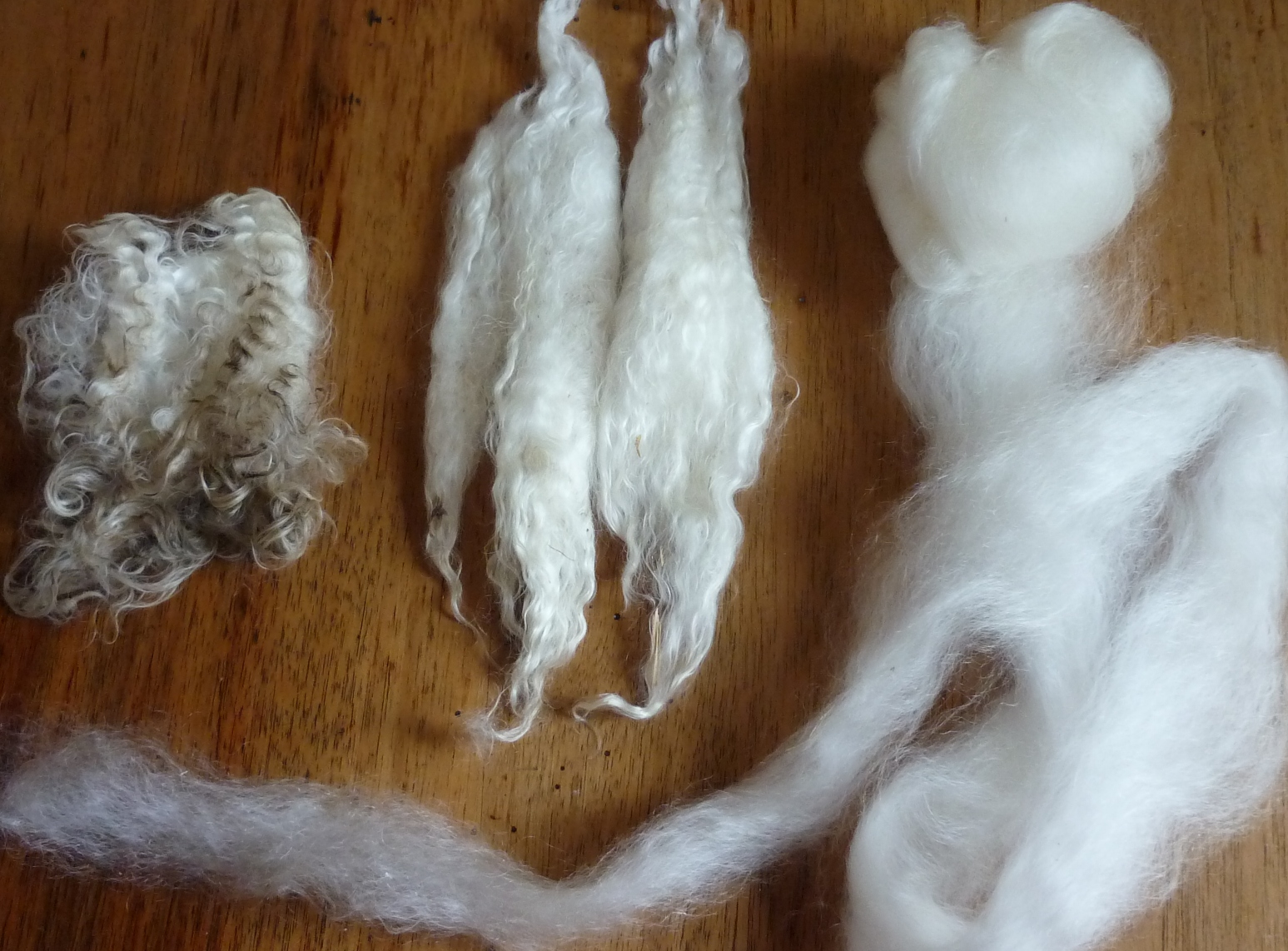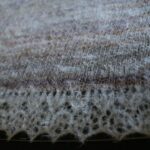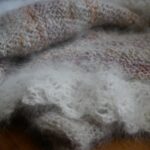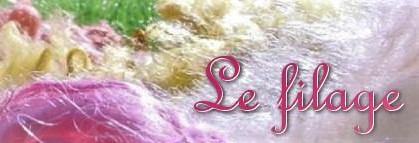De la Toison au Tricot n° 74 : Laver le mérinos et le mohair
Following a number of requests from readers, I thought I would show you how I wash both merino and mohair. My method is a variation of that used by Margaret Stove. For those of you who really want to master the hand processing of raw merino wool, I strongly recommend Stove’s DVD, Spinning For Lace (Interweave Press, 2010).
First, when working with merino, it’s absolutely necessary to find a source that can provide you with the very best quality raw merino wool. Working with merino is a time-consuming proposition : not only the fiber prep, but also the spinning ! So you really need to insist on a high quality fiber to start with. Of all of the merino that I’ve purchased, the very best (by a long shot !) is Natchwoolie raw merino : available in the most yummy natural colors ; beautiful staple length and quality ; with unbelievable crimp and fineness. This is really “the” source for raw merino : don’t hesitate … you won’t be disappointed.
Suite à de nombreuses demandes de lectrices et de lecteurs, je vais vous montrer comment je travaille la laine mérinos et le mohair. Je me suis largement inspirée de la méthode de Margaret Stove. Pour ceux qui veulent vraiment maîtriser le travail de la laine mérinos, je vous fortement conseille le DVD de Margaret Stove, Spinning For Lace (Interweave Press, 2010).
D’abord, pour le mérinos, il faut vraiment se procurer la meilleure qualité possible. Le travail, y compris le filage, de la laine mérinos prend pas mal de temps. Alors, il faut vraiment insister sur la qualité. De toute la laine mérinos que j’ai achetée … la meilleure (de loin!) est celle de Natchwoolie : disponible dans des couleurs naturelles tout à fait délicieuses, d’une finesse inouïe, et d’une qualité à faire rêver. Alors, il ne faut pas hésiter : vous ne serez pas déçu !
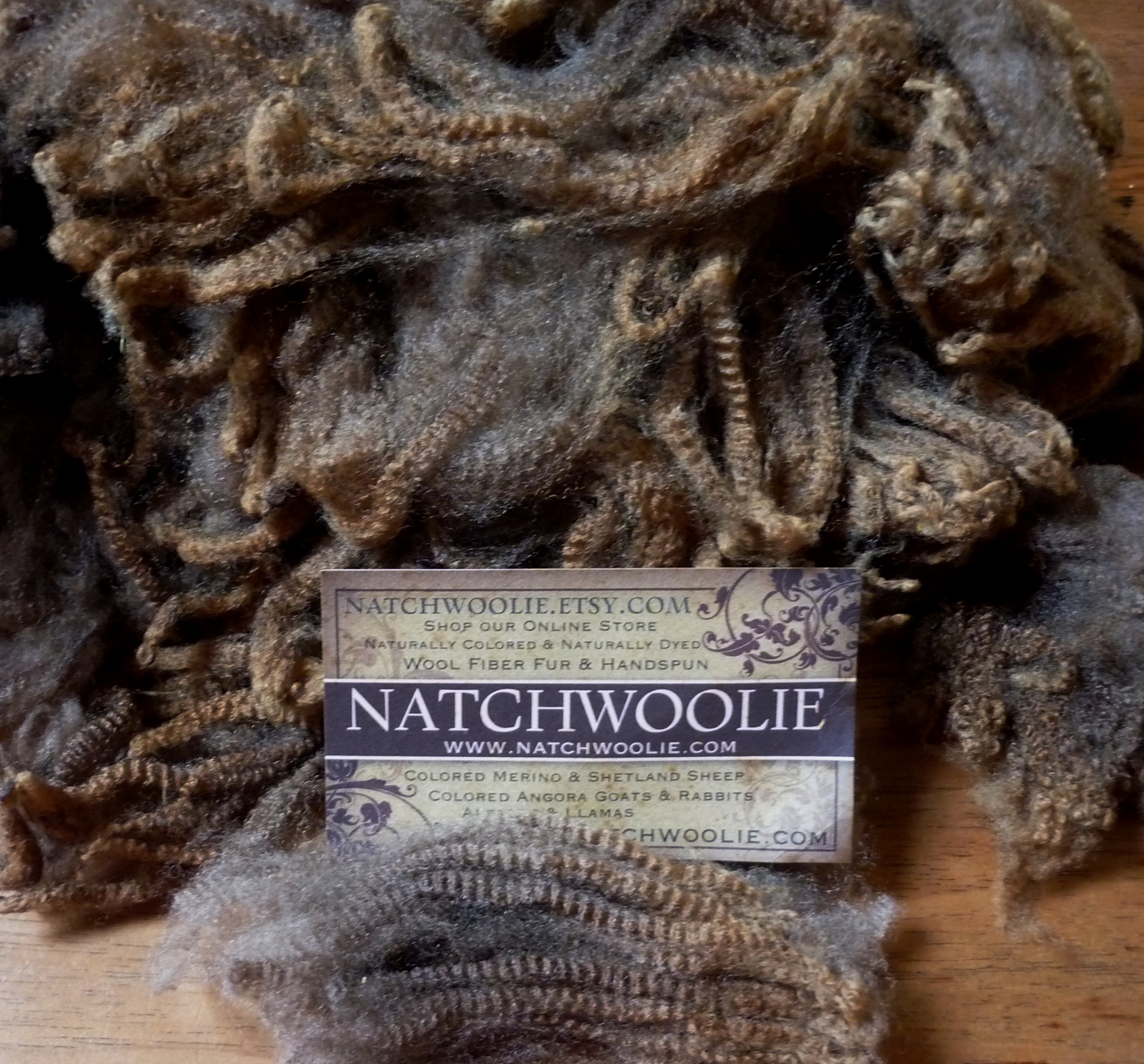
First, when your merino fleece arrives, it will look a bit like a big blob of raw wool. No need to panic : this is how it’s suppose to look.
D’abord, quand votre laine mérinos arrive, elle a l’air d’un gros amas de laine brute. Pas de panique : c’est normal !
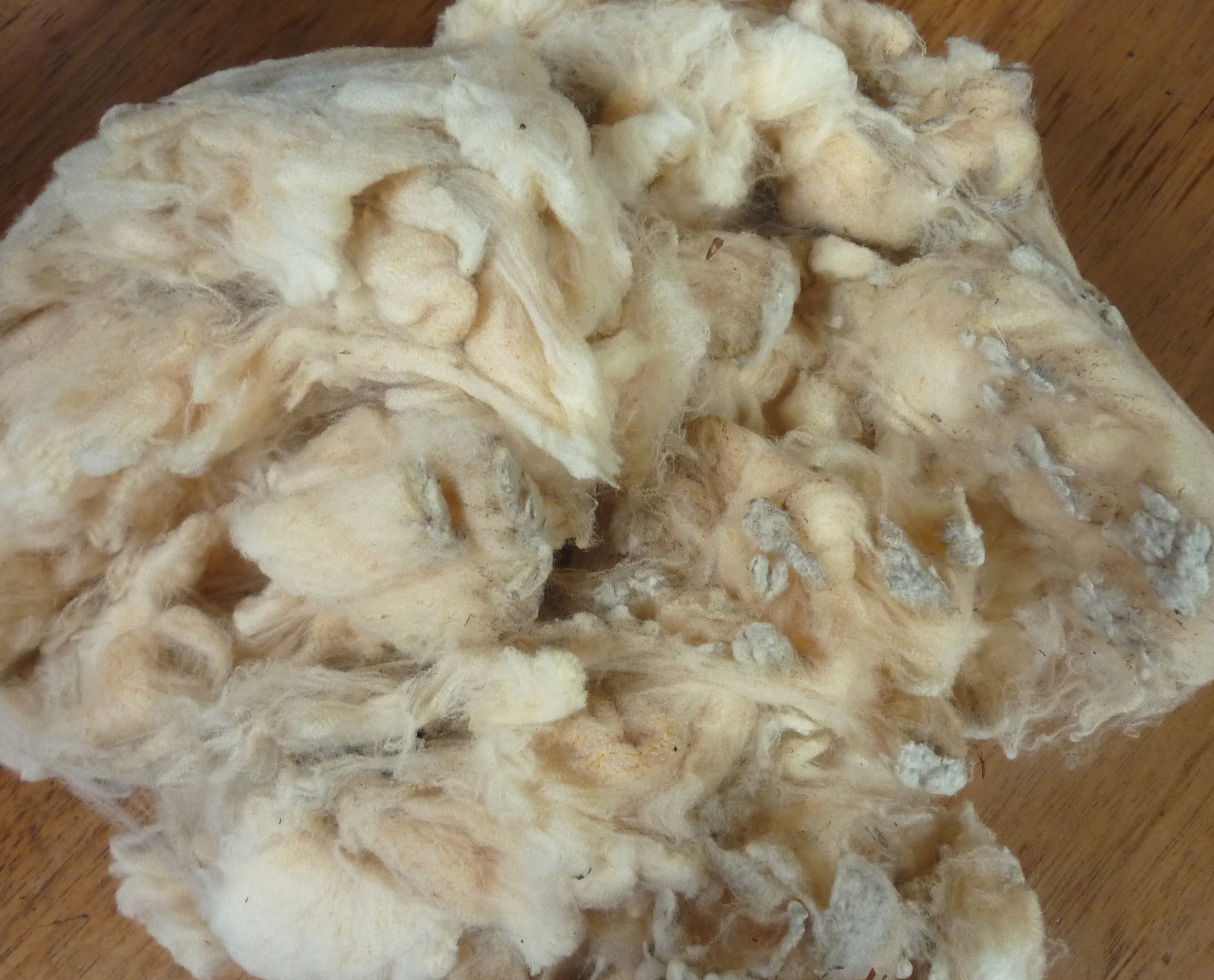
The first thing that you’ll need to do is to carefully organize your fleece, lock by lock. In order to do this you are going to grab hold of a few locks by the tips, then very gently pull them out of the fleece. Okay .. This does take a bit of time, but it is an important step.
La première chose qu’il faut faire, c’est d’arranger votre laine, mèche par mèche. Pour faire ça, vous allez prendre quelques mèches par les points puis les retirer très doucement de la toison. D’accord, ça prend un peu de temps, mais c’est une étape importante.
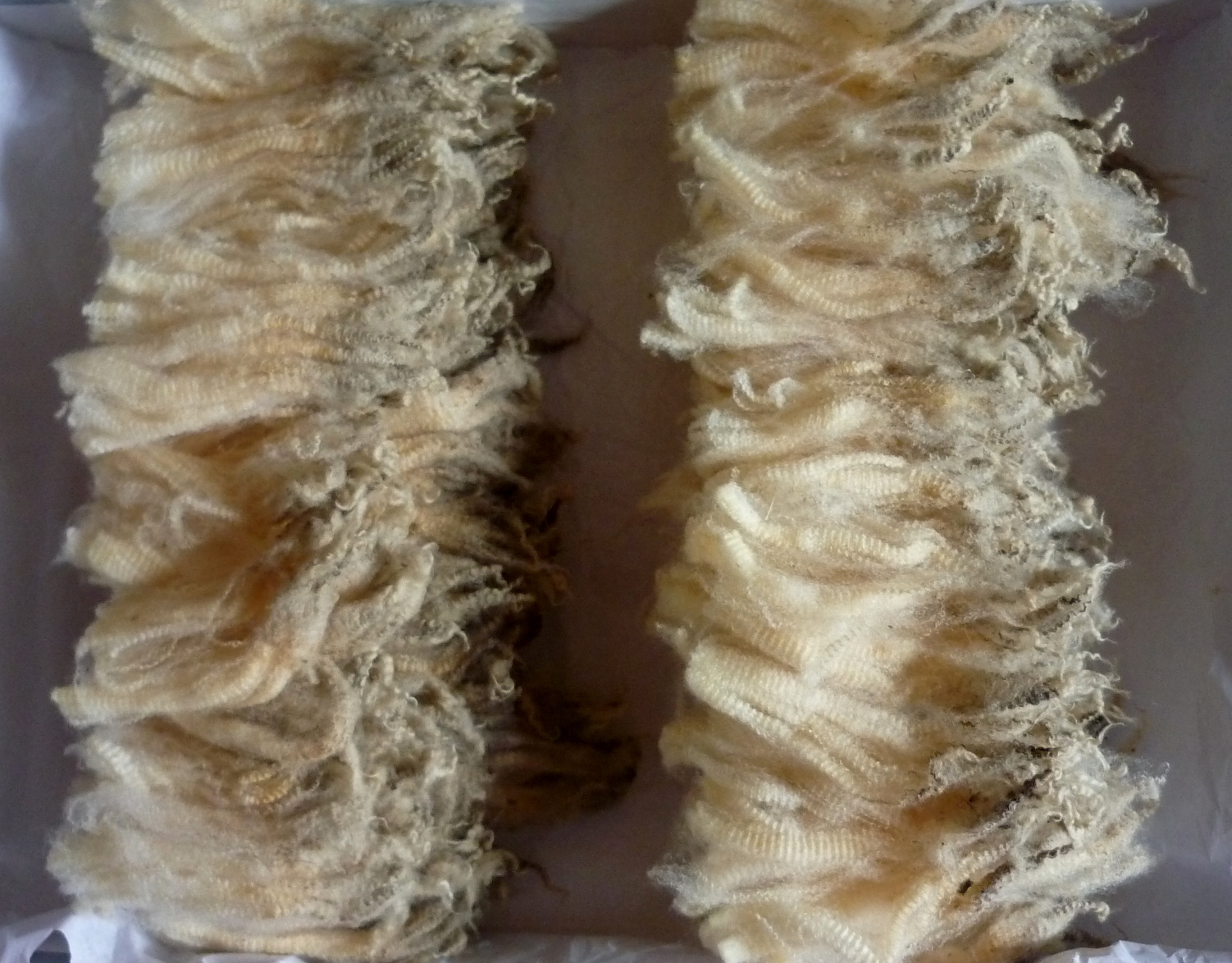
Before beginning, I would like to underscore a few things.
As I have already explained, suint is water soluble. But it is really essential to understand just what lanolin is and how it can be removed from a fleece. First, even if we often talk about “wool in the grease” when we refer to raw wool that still contains lanolin, it’s important to realize that lanolin is actually a type of wax. In order to remove this natural wax from the fleece we must use heat (at least 140̊ f but not more than 210̊ f) to “melt” the wax and soap or detergent to remove the wax from the fiber and prevent it from reattaching itself to the fiber.
In order to wash you merino locks, start by putting a generous amount of dish soap in a small bowl. I put approximately ½ cup. Finally, fill the bowl with hot water that is around 180̊ f.
Avant de commencer, j’aimerais bien souligner certaines choses.
Comme j’ai déjà expliqué à plusieurs reprises, le suint est soluble dans l’eau. Pourtant, il faut comprendre ce qu’est la lanoline et ce qu’il faut faire pour l’enlever de la toison. Ça c’est particulièrement important dans la mesure ou il y a beaucoup de lanoline dans une toison mérinos. D’abord, même si nous parlons souvent de la “graisse” quand on parle de la lanoline, il faut savoir qu’il s’agit d’une cire. Pour enlever cette cire de la toison ovine, il faut de la chaleur (au moin 60̊ c mais pas plus que 100̊ c) pour “fondre” la cire et du savon pour éloigner la cire fondue de la fibre.
Pour laver vos mèches mérinos, commencer par mettre une bonne dose de liquide vaisselle dans un petit saladier. Je mets à peu près 125 ml. Puis remplir le saladier avec de l’eau chaude – environs 80-85̊ c.
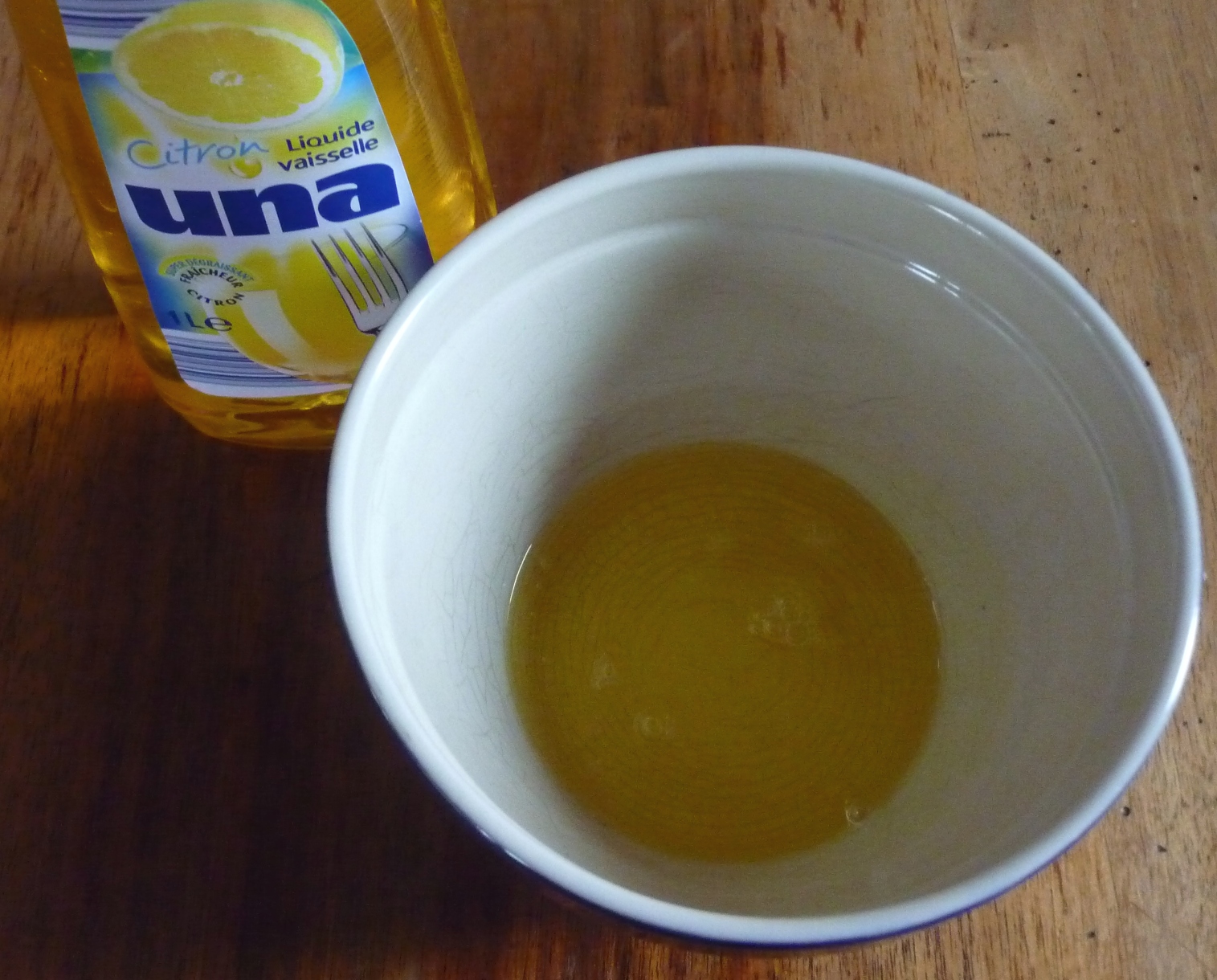
Take a lock of wool that is not too big (approximately the diameter of your thumb) and hold it by one end. Gently swish the lock of wool in the hot soapy water for a few seconds. Take the wool out of the water then press out the excess water between your thumb and index finger. Be careful not to tug on the wool or stretch it when wet. Then hold the lock by the end that you have just washed. Swish the other end in the hot soapy water. Press out the excess water, Then put the washed lock to the side.
Prendre une mèche de laine pas très grosse (à peu près la diamètre du pouce) par un bout. Remuer la mèche de laine dans l’eau chaude quelques secondes. Retirer la mèche de l’eau. Presser la mèche entre le pouce et l’index pour ôter l’excès d’eau. Attention : ne pas tirer sur la laine quand elle est mouillée. Puis prendre la laine par le bout que vous venez de lavez . Remuer dans l’eau chaude. Retirer. Ôter l’excès d’eau. Puis mettre la mèche de côté.
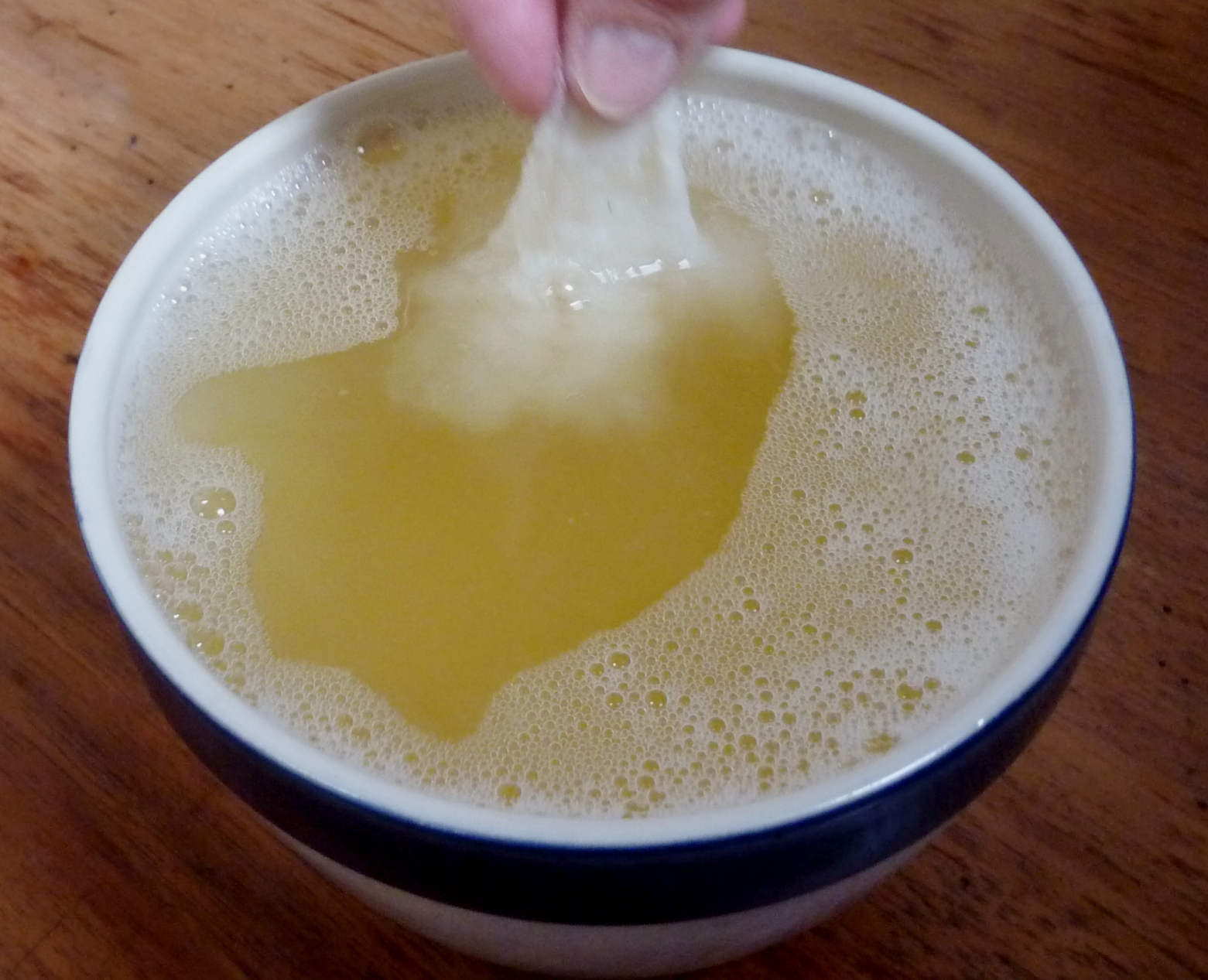
After washing a “certain number” of locks (usually I wash about 25 at a time), you will need to throw out the hot soapy water and refill the bowl with clear hot water (approx 180̊ f) that contains no soap.
Après avoir lavé “une certaine quantité” de mèches de laine (normalement j’en fais à peu près 25 dans une “tournée”), il faut jeter l’eau chaude savonneuse, puis remplir le saladier avec de l’ eau chaude (80̊ c) claire et sans savon.
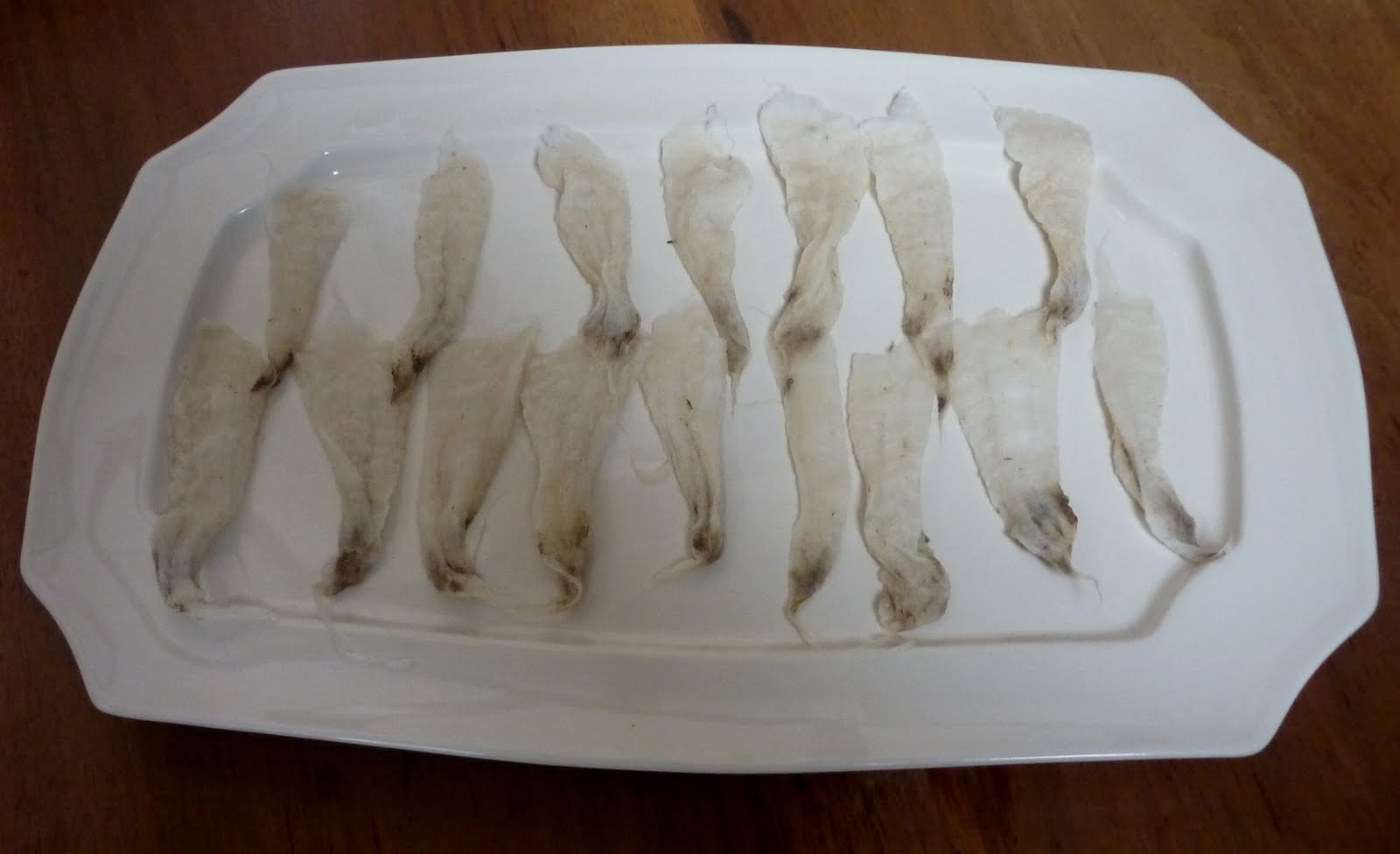
In order to rinse you locks, repeat the same steps that you did when washing the wool. Note that there is no need to rinse more than one time. Don’t worry if there is a little soap left in the locks. After rinsing, I put each lock on a towel which I roll up to press out any excess water.
Pour rincer les mèches, répéter les mêmes gestes que vous avez fait pour laver la laine. C’est pas du tout grave si un peu de savon reste dans la laine. Il ne faut rincer qu’une fois. Après rinçage, mettre les mèches sur une serviette. Je les presse dans la serviette avant de les laisser sécher.
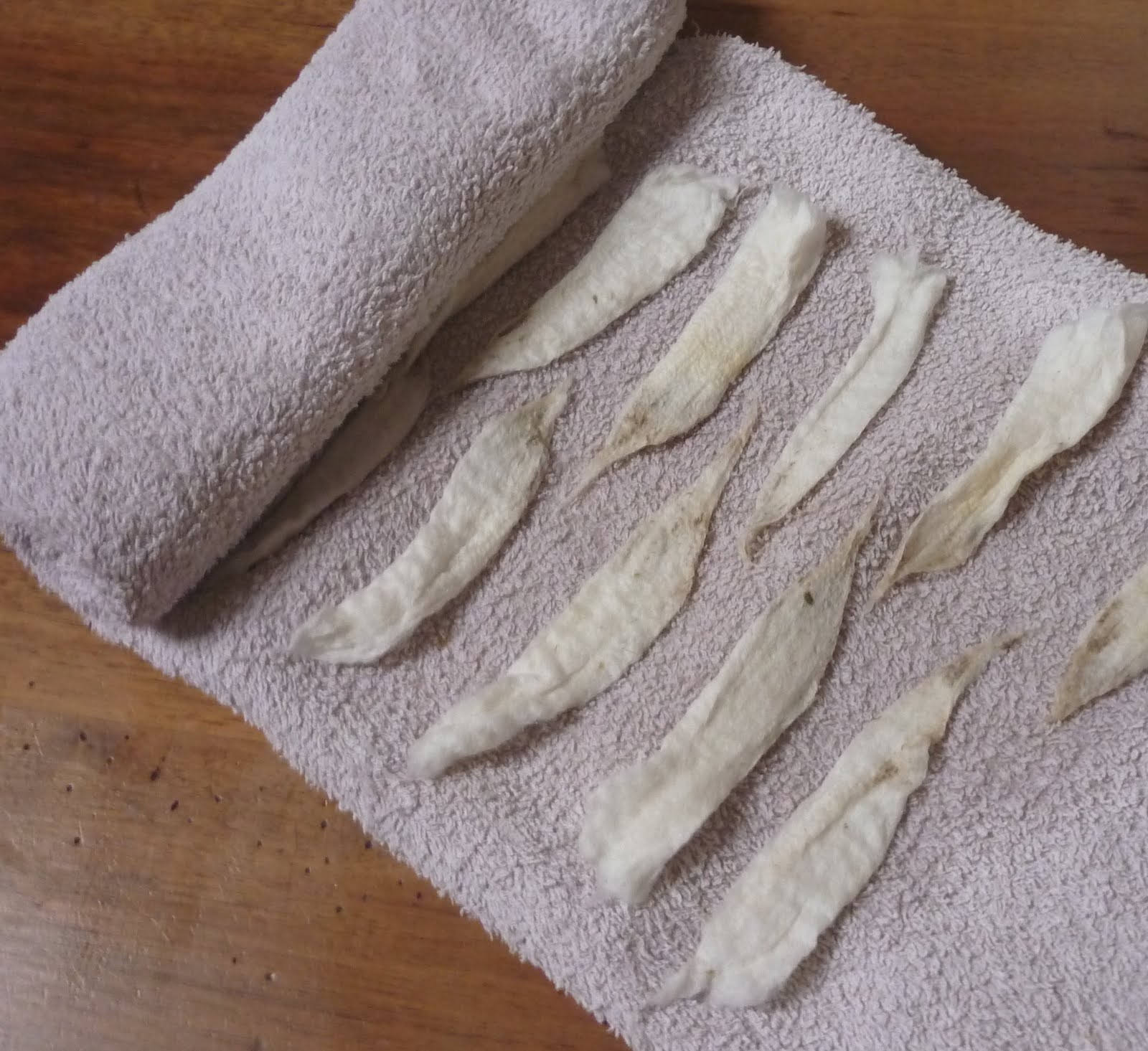
After being pressed in the towel, the locks come out quite flat (and a bit sorry looking!)
Sorties de la serviette, les mèches sont très aplaties.
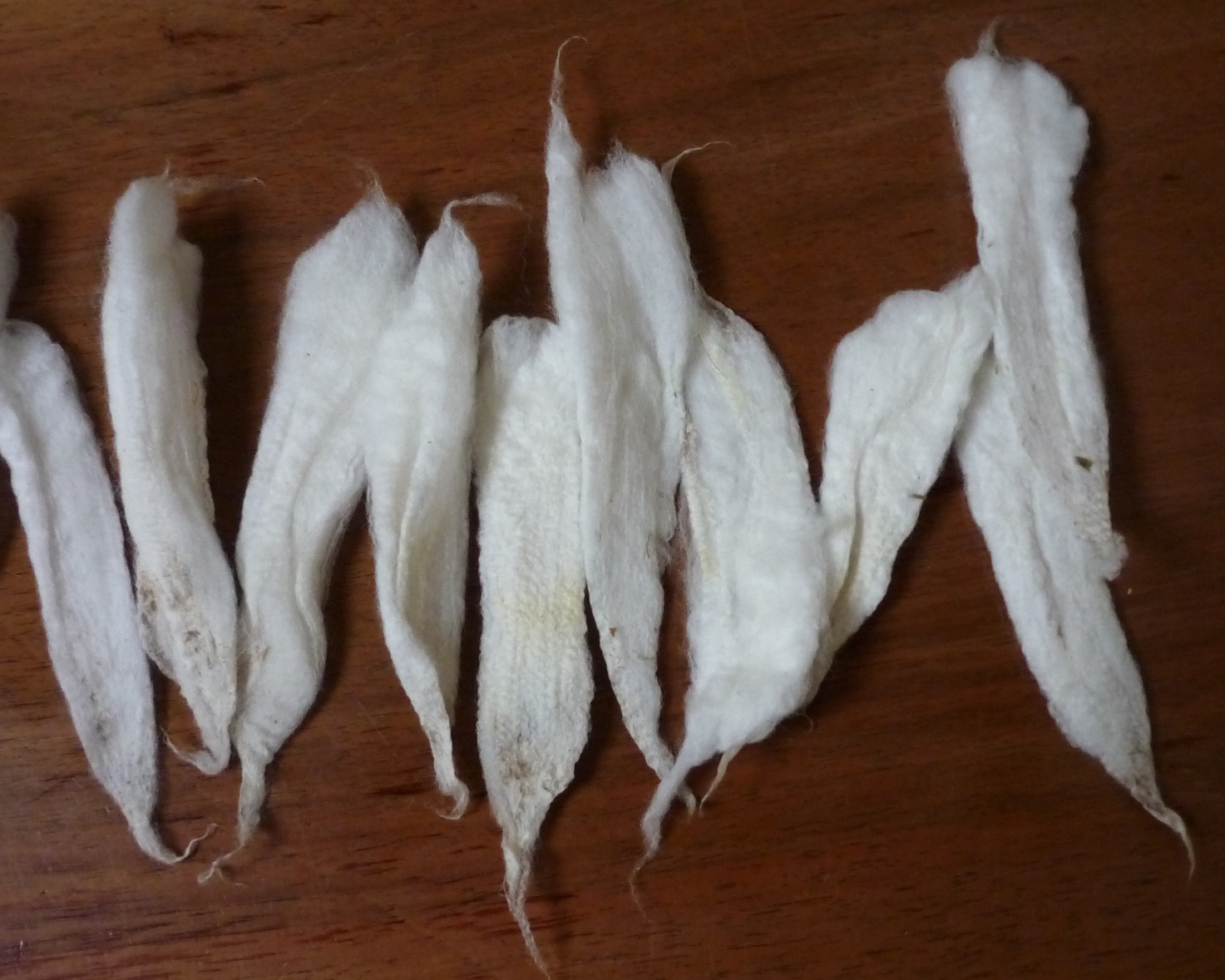
But as the locks dry they will become beautifully puffy !
Mais au fur et à mesure qu’elles sèchent, les mèches se regonflent.
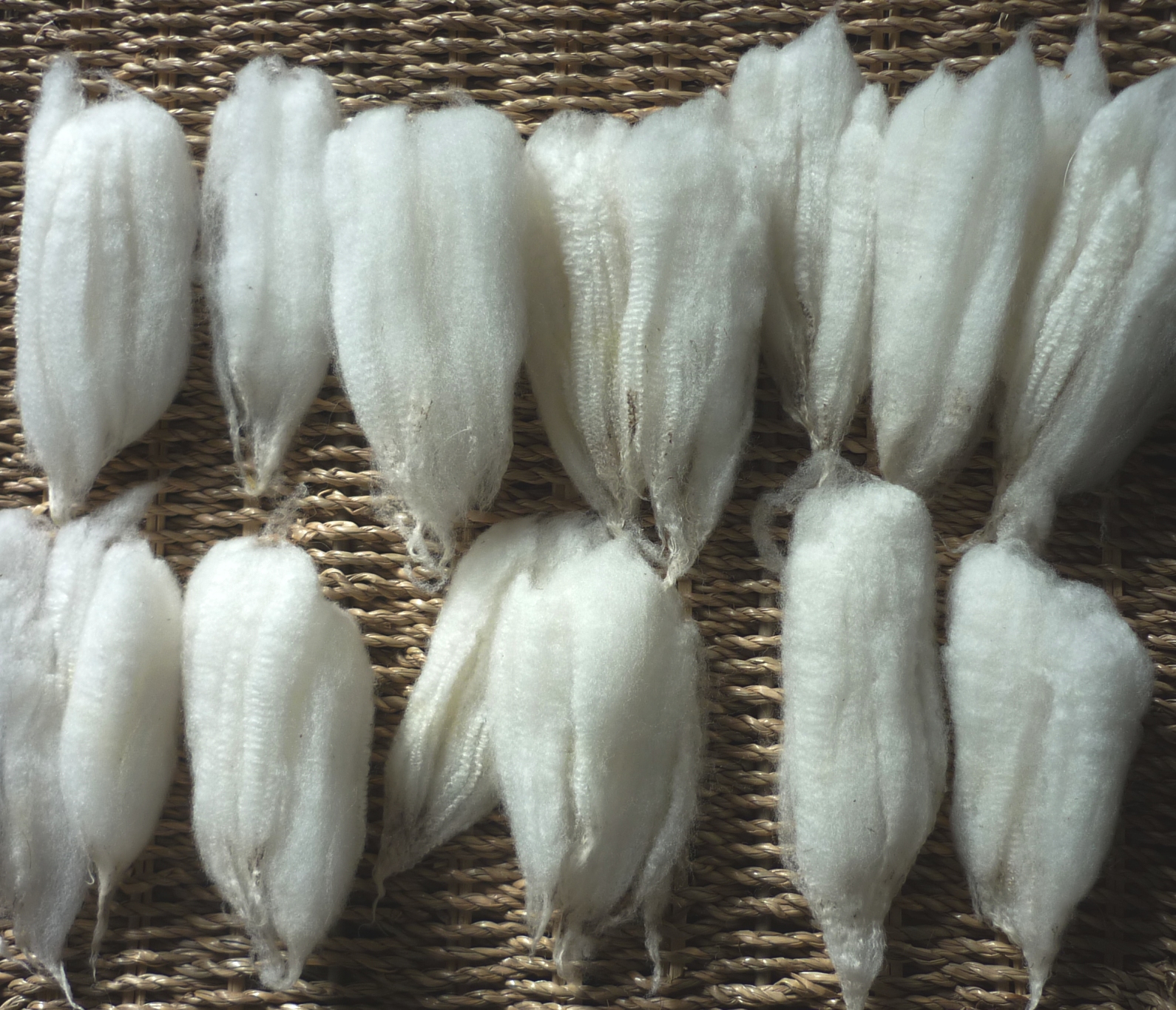
I comb the wool once the locks have dried. Additionally, if the tips are still a bit dirty or worn, I will cut them off before combing.
Je peigne la laine quand les mèches sont sèches. Toutefois, si les points sont sales ou abîmés, je les enlève avant peignage.
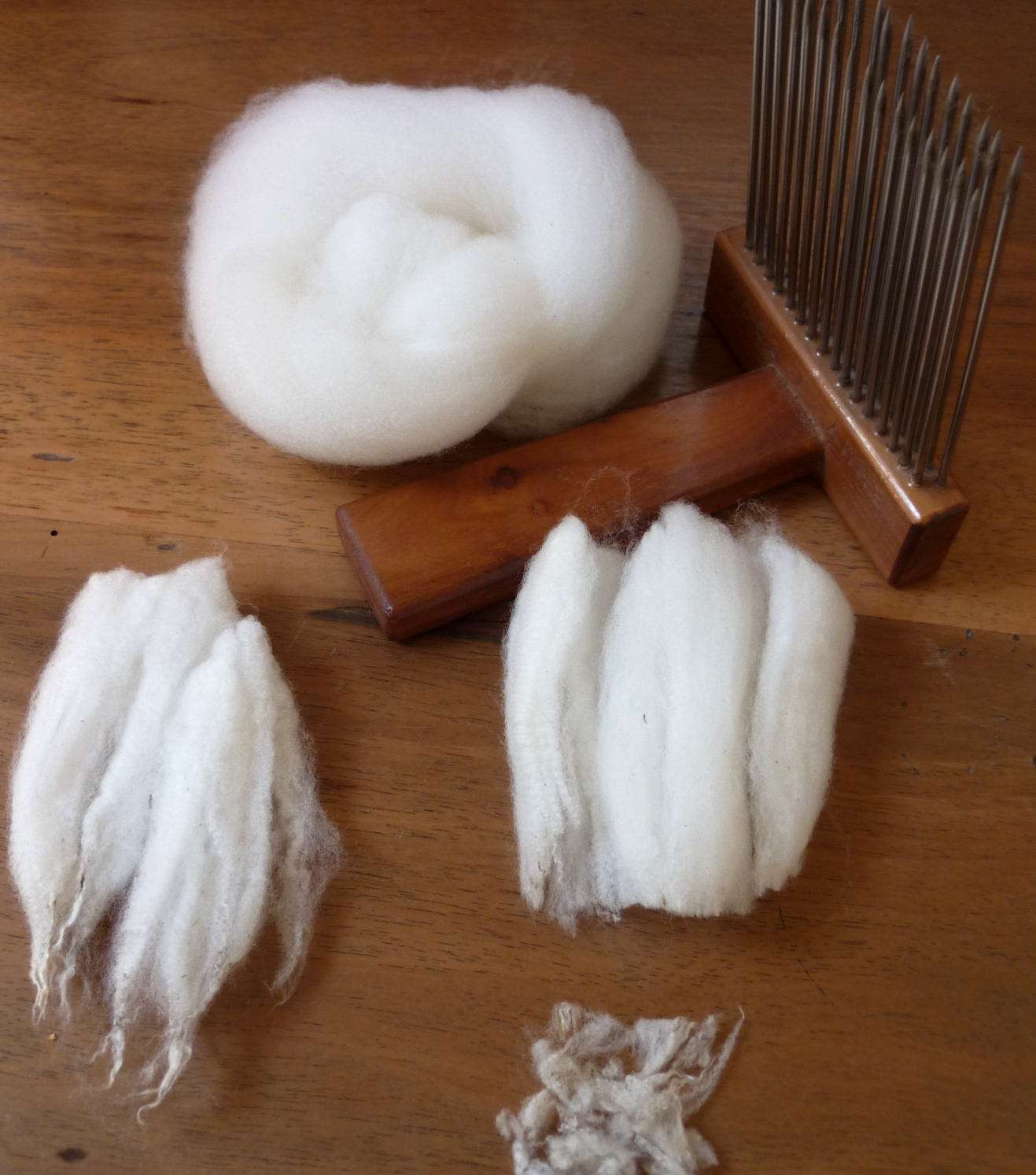
Even though you might find this process to be a bit long and meticulous, once you get going you will find it to be easy to do and rather fast too ! But the best part is this : the results are worth the effort. I use this same method for washing raw mohair : and it works beautifully. Here’s a photo of Nadjà’s mohair fleece : dirty locks, washed locks, and combed mohair !
Bien que ce processus puisse vous sembler long et méticuleux, il est en réalité assez facile et plutôt rapide à faire. En plus, le résultat vaut largement la peine ! Ce même processus marche également à merveille pour le mohair. Voilà une photo du mohair de Nadjà : mèches sales, mèches lavées, et mohair peigné.
